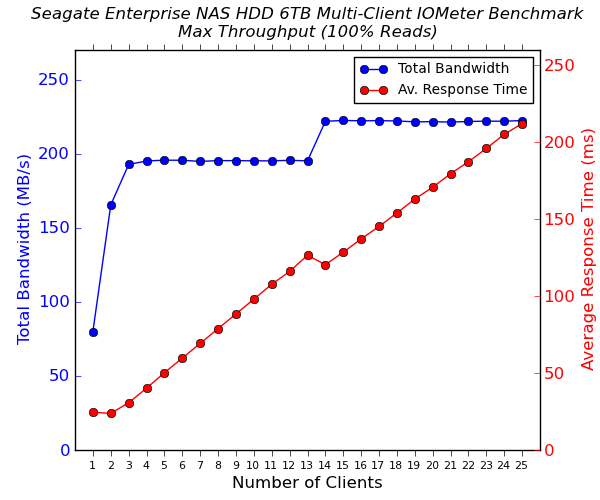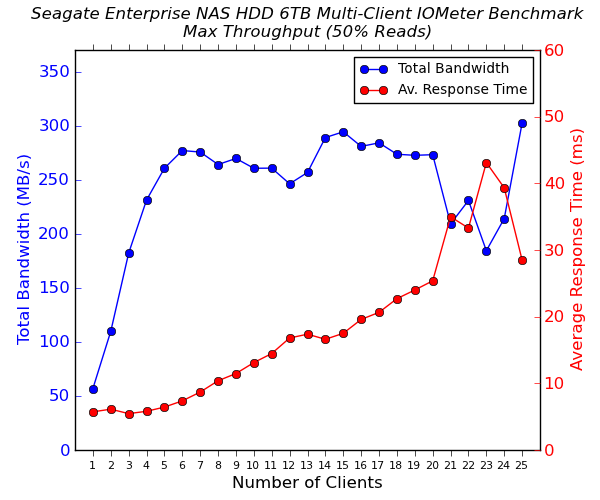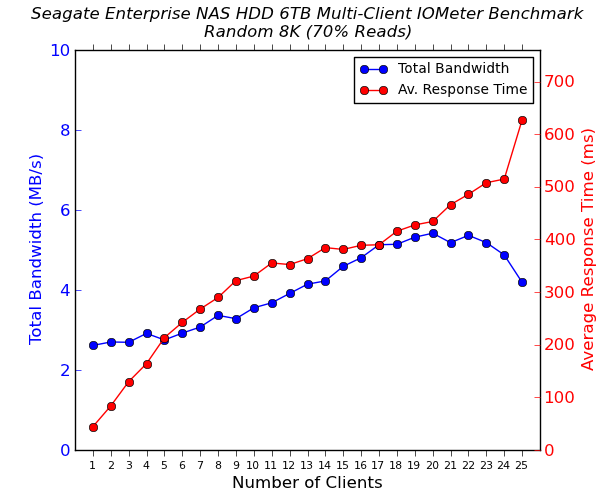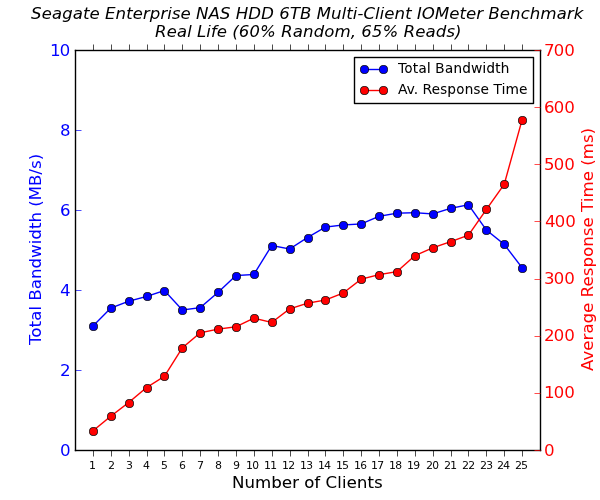Seagate Enterprise NAS HDD 6 TB Review
by Ganesh T S on December 10, 2014 8:00 AM EST- Posted in
- NAS
- Storage
- Seagate
- HDDs
- Enterprise
Multi-Client Access - NAS Environment
We configured three of the Seagate Enterprise NAS HDD drives in a RAID-5 volume in the QNAP TS-EC1279U-SAS-RP. A CIFS share in the volume was subject to some IOMeter tests with access from up to 25 VMs simultaneously. The following four graphs show the total available bandwidth and the average response time while being subject to different types of workloads through IOMeter. IOMeter also reports various other metrics of interest such as maximum response time, read and write IOPS, separate read and write bandwidth figures etc. Some of the interesting aspects from our IOMeter benchmarking run are available here.




We see that the sequential accesses are still limited by the network link, but, this time, on the NAS side. On the other hand, our random access tests show markedly better performance for enterprise drives. From a viewpoint of the average access times, the Seagate Enterprise Capacity v4, Seagate Enterprise NAS HDD and the HGST Ultrastar He6 all fall in the same category. Amongst these three, the Enterprise NAS HDD doesn't win out on any particular benchmark. However, that is to be expected - the other drives that are in the comparison list are targeted towards true enterprise-class / datacenter applications.










51 Comments
View All Comments
intiims - Tuesday, December 30, 2014 - link
Great topic, usefull information.If You want to Read more about External Hard Drives visit: http://www.hddmag.com/